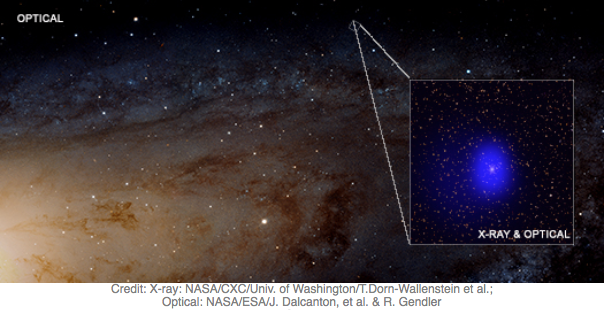
Astronomers used X-ray and optical observations to find out that a previously detected source is actually much more interesting than what was initially thought!!
The studied source, named LGGS J004527.30+413254.3 or J0045+41 for short, was thought to be an object within the Andromeda galaxy that lies 2.5 million light years from us. Due to its optical variability it was classified as a pair of stars.
However, X-ray observations, by NASA’s Chandra observatory, revealed that the source had to be either a binary system in the Andromeda galaxy, containing a neutron star or black hole or a much more massive and distant object that contains at least one supermassive black hole (SMBH)!
The optical spectrum that was obtained by the Gemini-North telescope showed that the source hosts at least one SMBH and lies 2.6 billion light years from Earth! There were also hints in the spectrum that a second black hole was also present. Astronomers then used optical data from the Palomar Transient Factory to look for periodic variations in the light from J0045+41. The periods they found vary from 80 to 320 days. The ratio of them, according to theoretical models, indicates that there are indeed two SMBHs orbiting each other!! The distance between the two black holes is only a few hundred times the distance between the Earth and the Sun!
In the future these two SMBHs will merge into one giant black hole. The time this will happen it depends on the mass of each of these black holes. Since the astrophysicists were unable to accurately measure their masses, they think that the merger will take place some time the next 350 to 360,000 years. During the merger, gravitational waves will be emitted. However, these waves cannot be detected by LIGO or Virgo, since these facilities can detected merger signal from stellar mass black holes, that weigh less than 60 Suns (or between two neutron stars).
This is the first time that astronomers have such strong evidence for a pair of orbiting supermassive black holes!
Publication: Dorn-Wallenstein et al. 2017
Source: Chandra
